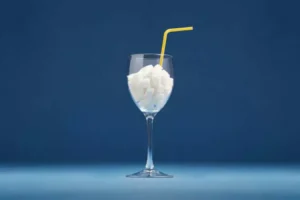
Alcohol intoxication manifests in brain areas responsible for higher level functioning (Ogden and Moskowitz 2004) and consequently impairs several aspects of cognition required for safe driving (Breitmeier et al. 2007; Jongen et al. 2014). Despite this, many jurisdictions permit fully licensed drivers to operate a vehicle while under the influence of alcohol, with most enforcing legal BAC limits of 0.05% (e.g. Australia and New Zealand) or 0.08% (e.g. England and most states within the USA). While significant progress has been made towards strengthening existing legislation that penalizes driving under the influence of alcohol, drink-drivers remain over-represented in road trauma cases (World Health Organization 2018). As a result, the U.S. has instituted policies designed to curtail excessive consumption, including alcohol pricing, taxation, advertising, distribution, and sales. Many of these policies, such as increased taxes (e.g., Elder et al., 2010), are explicitly based on standard assumptions that increased pricing, or decreased supply, will reduce consumption consistent with classic economic theory. While many of these policies have had significant salutary effects, their effectiveness varies as a function of individual difference characteristics, including level of alcohol consumption (Chaloupka et al., 2002; Meier et al., 2010).

Social, academic, and legal issues:

However, recent studies have suggested that both delay discounting and demand for alcohol have potential implications beyond consumption, and may have independent implications for decisions about driving after drinking. Individuals with steeper discounting curves (dramatically valuing immediate rewards and devaluing comparable future rewards) are more likely to report AID, even after accounting for consumption and other personality traits (e.g., impulsivity; Rossow, 2008). In addition to greater discounting, impaired drivers also demonstrate less prior planning for drinking events (e.g., appointing a designated driver; Sloan, Eldred, & Xu, 2014). Alcohol consumption is linked not only to unintentional but also to intentional injury.
- A similar dose-response relationship exists between alcohol consumption and the incidence of atrial fibrillation4 (Samokhvalov et al. 2010b).
- The molecular and biochemical mechanisms by which chronic alcohol consumption leads to the development of cancers of various organs are not fully understood.
- The 45-to-49 age group had the highest percent, 37%, of drunk motorcycle riders killed in 2022.
Confidence in driving performance
Alcohol has a suppressing effect on the brain and central nervous system. Research has shown that when alcohol is removed from the body, it activates brain and nerve cells, resulting in excessive excitability (hyperexcitability). After drinking 8 to 9 units of alcohol, your reaction times will be much slower, your speech will begin to slur and your vision will begin to lose focus. As the leader in addiction treatment American Addiction Centers specializes in helping people recover from alcohol addiction. If you are looking for more information about alcohol addiction, find some useful information for those seeking guidance; or you can learn more about insurance coverage and instantly verify insurance with an AAC facility. Alcohol and aggression are closely linked, with alcohol intoxication being a factor in nearly half of all violent crimes.
Effects of underage drinking
They are designed to change the campus and community environments where student drinking occurs. Often, a major goal is to reduce the availability of alcohol because research shows that reducing alcohol availability cuts consumption and harmful consequences on campuses as well as in the general population. Individual-level interventions target students, including those in higher risk groups such as first-year students, student athletes, members of Greek organizations, and mandated students. The interventions are designed to change student knowledge, attitudes, and behaviors related to alcohol so they drink less, take fewer risks, and experience fewer harmful consequences. Students attending schools with strong Greek systems or prominent athletic programs tend to drink more than students at other types of schools.
- Dependent drinkers with a higher tolerance to alcohol can often drink much more without experiencing any noticeable effects.
- Long-term alcohol misuse can weaken your immune system, making you more vulnerable to serious infections.
- A commonly used driving simulator assessment is the 100-km highway drive, adopted from on-the-road studies (Verster and Roth 2011).
Senior Faculty Editor, Harvard Health Publishing

The good news is that no matter how severe the problem may seem, most people with AUD can benefit from treatment with behavioral therapies, medications, or both. Beyond these physical and mental health risks, frequent alcohol misuse also is linked with personal problems, such as losing one’s driver’s license or having relationship troubles. Prenatal alcohol exposure can result in brain damage and other serious problems in babies. The effects are known as fetal alcohol spectrum consequences of driving drunk include: disorders, or FASD, and can result in lifelong physical, cognitive, and behavioral problems. Because there is no known safe level of alcohol for a developing baby, women who are pregnant or might be pregnant should not drink.
- If you choose to drink, consider public transport, rideshare, or organising a friend to be designated driver.
- Screening youth for alcohol use and AUD is very important and may prevent problems down the road.
- Aggression combined with impaired judgment and impulse control can be a recipe for road rage incidents.
- Any given policy has many “downstream” implications, which may ultimately influence the decision maker in unintended ways.
- By four drinks, or a BAC of .08%, overall muscle coordination deteriorates.
- Know that alcohol steadily decreases a person’s ability to drive a motor vehicle safely.
- Those who employed a rational strategy on the task were more likely to report recent AID behavior.
- For instance, individuals with addiction may also be more likely to discount the value of a probabilistic reward (probable but not guaranteed health) relative to a certain one (reliable pleasure), though this association is less robust (Bickel et al., 2014).
- All states use ignition interlocks to some degree, but as of January, only 23 states require interlocks for all DUI offenders.
- This heterogeneity can arise from either a natural individual difference in decision making strategy, or be due to the chronic (addiction) or acute (intoxication) effects of alcohol.
1.5 million people are arrested each year for driving under the influence of alcohol. A few years ago, a drunk driver with multiple prior offenses and no valid driver’s license smashed a truck through the wall of my son’s day care. Know the facts about what each subsequent drink does to your ability to operate a vehicle safely. A .gov website belongs to an official government organization in the United States. Parents and teachers can play a meaningful role in shaping youth’s attitudes toward drinking. Parents, in particular, can have either a positive or negative influence.


Comentários